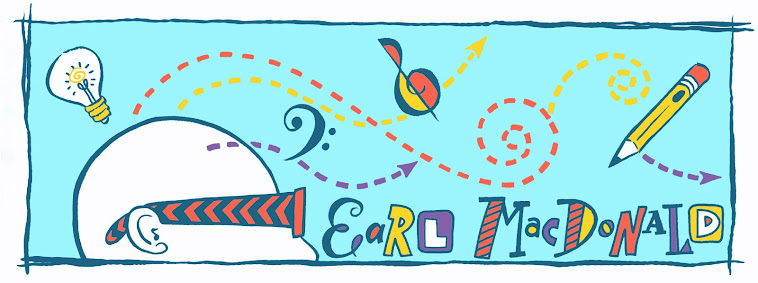"Have you ever had writer's block?"Jazz musician, Dave Douglas began his composition master class with these two questions. Every hand in the room went up, and he immediately had a captive and engaged audience.
"Who here has written four measures and then found themselves stuck?"
Dave shared the following points during his one hour composition lecture to the UConn music students. Although intended for novice composers of music, much of what he presented could easily be applied to other creative disciplines.
1) Revision:
Approach writing with the mindset that everything can be revised and rewritten. Don't begin with the notion that what you initially write down has to be perfect. Tell yourself, “I am writing a draft; not a finished piece.” It is liberating to think of everything as a first draft which can be fixed. This takes the pressure off.
2) Community:
You don't have to be alone in confronting a blank page. Consider for whom you are writing. Write for the people around you --- your friends, musical peers. Talk to the individual for whom you are writing. Ask him/her questions. Find out what excites them.
3) Essence of Elements:
Boil down enormous ideas into "a simple essence". Find elements that are transcribable. Identify tangible aspects of musical information, such as: form, time signature, instruments, melody, harmony, rhythm, density, bass lines, etc. Ask questions. Is the piece programmatic? Will there be aspects of improvisation?
Remember that form is flexible. Your first idea can end up being the middle of the piece.
4) Theme:
What are you writing about? Perhaps it is something to challenge yourself, like an etude. It could be about or in response to something as simple as an animal. Characters from a movie or play can provide inspiration. Try writing in the style of __________.
5) Deadlines:
Deadlines can be your friend. They keep you moving. They bring finality/conclusion to a project, rather than it being just an elusive, vague thought which floats around. Create your own deadlines. Schedule a rehearsal with friends to play your new music, even before it is written.
6) Environment:Consider where you write. Sometimes a change of environment can spark your imagination. Try writing music on a park bench or in the public library. Develop dictation and ear training skills so that you can write down your musical ideas away from your instrument.
[How do you get your work heard? Enter competitions. Book local gigs and gradually expand your radius, beginning with the next neighboring town.]
7) Distillation:
Fifteen page pieces aren't always effective. Simple, distilled, suggestive works allow for maximum freedom and expression. Aim to write pieces so clear, that they could be played well on the first reading. Don't be bound to your initial ideas. Pruning can be beneficial.
8) Graphic / Notation / Communication:
How effectively are you communicating your thoughts on paper? Is standard notation the best way to express your musical ideas? How else could you convey your ideas? Research graphic scores and aleatoric composition. Strive for clarity and ease of reading. Reduced scores allow everyone to see the big picture of what is going on.
9) Ask Questions:
How could this piece be different? Can more than one person solo / improvise at same time? Does it have to stay at the same tempo? Could the horns accompanying a bass solo? What if...?
10) Technical:
Study books about 12-tone composition. Familiarize yourself with the work of modern, post-war composers. Bartok and Stravinsky represent a wealth of inspiration. When you are "stuck", try copying some Bartok string quartets by hand. Read "the Technique of My Musical Language" by Olivier Messiaen.
Assignment:
Write for 15 minutes without a piano (away from your instrument), then play it. One page limit.
At the end of the master class, Dave encouraged the students to form a composition club which meets weekly to read their pieces. He even offered to visit at some point in the future to listen to their new pieces! I understand that this club is now underway. The students have asked me to provide them with a list of composition assignments, which I will be happy to do. I plan to post these in my next blog entry.
You can read a detailed description of Dave Douglas' residency at UConn, in a blog written by UConn jazz saxophone student, Matt Baum. Here is a link: http://therightchanges.blogspot.com/2012/03/dave-douglas.html





